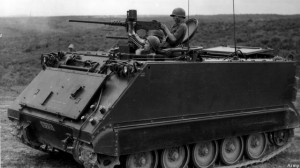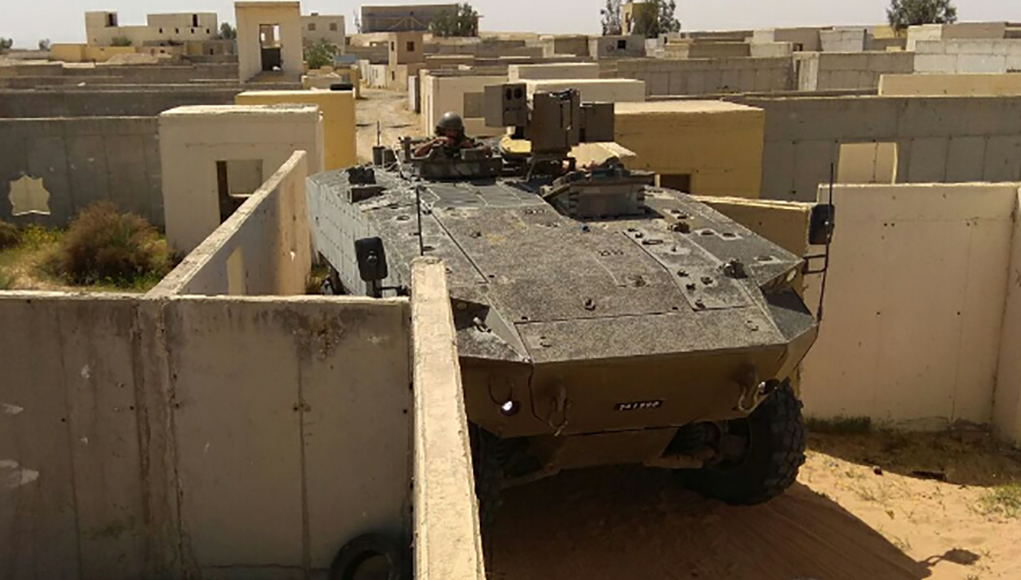Israel Rolls Out 8×8 Eitan, Eye on Exports
Posted on
Israel’s new Eitan armored personnel carrier is in final field testing with the celebrated Nahal infantry brigade, with series production to begin in 2021. Once the Israelis have enough Eitans to replace the last of their decades-old M113s, they plan to offer the new APC for export — and already foreign armies have sent observers to the Eitan trials.
What’s all the excitement about? The Eitan is a 30-plus-ton, eight-wheel-drive armored vehicle with a turreted 30 mm cannon and provision for an Active Protection System to shoot down incoming anti-tank rockets. It has a three-man crew — driver, gunner, and commander — and passenger space for nine fully equipped infantry.
Those basic specs are similar to the latest, most extensively upgraded models of the US Army’s Stryker. But the Stryker evolved to that point from the Swiss MOWAG Piranha of 1972, while the Eitan is an all-new design applying the latest technology specifically to Israeli needs.
The Israeli Ministry of Defense evaluated the Stryker but rejected it because “it did not meet the operational requirements,” said Brig. Gen. Guy Paglin, the MOD’s director for armored vehicles.
While the vehicle was developed by the Israeli government for Israeli needs, 60 percent will be manufactured in the US, Paglin told Breaking Defense in an interview. In 2024, he said, when the US no longer allows Israel to convert Foreign Military Financing (FMF) grants to local currency, the US-made portion may rise to 70 percent — part of a wider move by Israeli armsmakers to use American subcontractors and subsidiaries.
Driving Needs
Israeli Merkava 4 main battle tanks and Namer armored personnel carriers played a major role in Operation Protective Edge in Gaza in 2014. But while the Namer, built on the Merkava tank chassis, is heavier and better protected than almost any other troop carrier, the Israeli Defense Force has relatively few of them.
That meant many troops had to ride in the IDF’s aging M113s, a US design dating to 1962 that troops considered dangerously underarmored as far back as Vietnam, often riding on the top because a landmine would kill everyone inside.. To improve the protection of the M113s in Protective Edge, the Israelis covered the floor with sandbags. (The US replaced its M113s in frontline roles with M2 Bradleys back in the 1980s and is now reequipping support units with a turretless Bradley variant, the AMPV).
Besides being better armed and armored than the old M113, the Eitan is also wheeled rather than tracked. While the US Army is historically skeptical of wheeled armored vehicles — the Stryker is the only one it’s bought in decades — because of their lower performance over very rough terrain, many other militaries worldwide prefer them because of their lower cost, easier maintenance, and superior performance on long road marches. As Strykers showed both in Iraq — where they often acted as a mobile reserve — and Eastern Europe, the main operational advantage of wheeled armored vehicles over tracked ones is their ability to move long distances by road, without having to embark on railways or heavy transport trucks. (Eitan can also be airlifted, Paglin said, though it wasn’t specifically designed for air-mobile operations).
“The Eitan can travel at speeds of 55 miles per hour, and that gives it a major advantage when forces have to be transferred from one battle area to the other,” Brig. Gen. Paglin said.
To reach these speeds, the Eitan is powered by a 750 horsepower heavy fuel engine, with both German and US models being tested in the prototypes. Four of the eight wheels are steerable, enabling the vehicle to take tight turns and maneuver in narrow spaces both in cities and off road. The Israelis are evaluating whether to make the four back wheels steerable as well.
26 feet long and 10 feet wide, the Eitan weighs 33 tons (33 metric), including both the ballistic armor and the active protection system. The Israelis are currently testing two Israeli-made alternatives for the APS: Rafael’s Trophy, used in combat by the Merkava 4 tank and now being installed on the US M1 Abrams, and IMI’s Iron Fist.
The prototypes used for testing carry a single remotely operated weapon station, but production models will integrate an unmanned overhead turret armed with an ATK 30mm automatic cannon and a 12.7mm heavy machine gun. The 30 mm gun can elevate as high as 70 degrees, Paglin said, “which gives it a lot of advantages when the Eitan is used in urban warfare (where troops often fire from roofs and upper stories). This elevation allows the gunner to deal with high-placed targets like enemy soldiers using all types of anti-tank weapons, which are very popular among terror organizations.”
The Eitan will also have built-in smoke dischargers and a 60mm mortar for indirect fire, including high explosive rounds, illumination, and smoke. Paglin said the IDF is also looking at equipping the Eitan with anti-tank missiles like the 2.5-mile-range version of Rafael’s Spike.
The basic turreted Eitan platform is likely to be used for moving infantry in the battle combat, command, and scout missions. A turretless variant will serve in support roles such as a self-propelled mortar, combat engineering, armored recovery, and casualty evacuation.
Brig. Gen Paglin expects new turreted variants with different turret loadouts will enter service as well, once the Eitan is fielded in numbers. “It always happens after a combat platform is introduced into service,” he said. “New operational demands are met with new systems.”
Subscribe to our newsletter
Promotions, new products and sales. Directly to your inbox.



